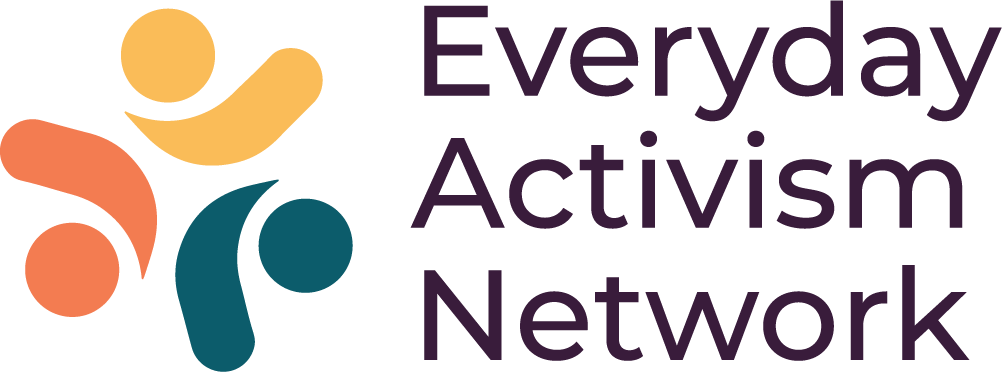What Does the Labor Movement Do?
The Fight for Decent, Safe, and Healthy Work
The labor movement fights for and helps to protect labor rights
The labor movement believes that work should be decent, safe, and healthy. That workers should receive a fair share of the wealth they help to create and that income levels should rise as profits and productivity rise. That 40 hours per week should be enough to cover the cost of living and retire with dignity.
There is no standard definition or definitive list of labor rights (aka workers’ rights) encompassing a range of legal and human rights. The International Labor Organization (ILO) asserts the overarching principles that all workers have the right to:
Freely choose and accept work. This includes the prohibition of forced labor.
Enjoy just and favorable conditions of work, including fair wages that provide for a decent standard of living and social protections such as unemployment benefits.
Safe and healthy working conditions.
Join or form a union, engage in collective bargaining, and conduct strikes free from coercion and independent from government and employer influences.
Rest, leisure, reasonable limitation of working hours, and periodic holidays with pay.
Non-discrimination including equal pay for equal work.
Labor rights also include protections for child workers by creating a minimum working age and specific working condition requirements.
Unions are a key part of the labor movement. Unions build power for working people and help them improve their jobs. They do this through collectively bargaining for things like fair wages, decent working conditions free from hazards and harassment, raises, affordable healthcare, job security, and stable schedules.
Without the labor movement and unions, we would not have the 40-hour workweek, 8-hour days, or weekends off. They gave us child labor laws, breaks, sick leave, paid holidays, and many more worker protections that we take for granted today.
See this timeline from 1684-2018 for major milestones in the U.S. labor movement.
Labor and workplace safety
From occupational hazards to harassment, many workers face dangerous working conditions. Research conducted by RAND Corporation, Harvard Medical School, and UCLA in 2015 concluded that:
61% of American workers perform repetitive or intense physical work.
20% report recent abuse or harassment at work.
50% work in their free time to meet workplace demands.
36% have work hours set by their employers with no possibility for changes.
And for some workers, such as farmworkers and other outdoor workers, climate change is intensifying harsh working conditions, making it even more dangerous.
Thanks to the labor movement, we have the Occupational Safety and Health Administration (OSHA), which sets and enforces workplace health and safety standards and requires employers to provide employees with working conditions free from known dangers.
Labor and economic justice
The labor movement believes in a world of shared prosperity. Corporate profits are at an all-time high, yet wages are at a 65-year low. The United States has the highest income inequality compared to other rich nations, with women and people of color disproportionately impacted. The wealth gap between America’s richest and poorest families has more than doubled since 1989. And, according to the Economic Policy Institute (EPI), the gap between productivity and wages is the highest in U.S. history.
Check out this EPI wage calculator to see how much you would be earning if wages had grown with productivity.
The labor movement is fighting for an economy that works for everyone. Where workers earn a fair share of the profits their labor helps to produce. From the Fight for $15 to Jobs with Justice, workers’ rights groups are mobilizing, litigating, and advocating for laws and policies that support the fair distribution of wealth and close corporate tax loopholes.
Labor and women’s rights
In 1911, the Triangle Shirtwaist Factory Fire killed 146 workers, mostly young women, because they were locked inside the building to prevent them from taking breaks. The incident shocked the nation and became a rallying cry for the labor movement, helping to usher in a series of workplace safety reforms and government regulations.
Over 100 years later, women — particularly immigrant women and women of color — are a driving force behind today’s labor movement. (This is despite historical tensions between the women’s movement and the labor movement.) From closing the gender pay gap to putting women in leadership positions, calling out sexual harassment, and demanding paid parental leave, women are on the frontlines of the fight for fair and dignified work.
But, there is still a long way to go. For example, during Covid, women were forced out of the workplace as they took on an unequal burden of unpaid care work (domestic work, child care, and eldercare) compared to their partners. And, despite the passage of the Lilly Ledbetter Fair Pay Act in 2009, we do not have equal pay for equal work. Overall, women still only make 82 cents to every dollar a man makes. And it’s even worse for women of color, with Black women making 63 cents, Native American women making 60 cents, and Latina women making 55 cents to the dollar. Learn more at EqualPayToday.org.
Labor and racial justice
The fight for racial justice and labor rights are inextricably linked.
“The U.S. economy was built on the exploitation and occupational segregation of people of color. While many government policies and institutional practices helped create this system, the legacies of slavery, Jim Crow, and the New Deal—as well as the limited funding and scope of anti-discrimination agencies—are some of the biggest contributors to inequality in America. Together, these policy decisions concentrated workers of color in chronically undervalued occupations, institutionalized racial disparities in wages and benefits, and perpetuated employment discrimination. As a result, stark and persistent racial disparities exist in jobs, wages, benefits, and almost every other measure of economic well-being.”
— Center for American Progress
Although some unions have a history of excluding workers of color, Black workers continue to have higher union membership than any other group. The labor movement has long stood in solidarity with the civil rights movement and, more recently, has supported Black Lives Matter and the movements for racial and economic justice.
Labor and unions
Advocates see a direct correlation between decreasing union membership (it hit an all-time low in 2020) and increasing economic inequality. The fewer workers at the negotiating table, the greedier corporations get.
According to EPI, unions:
Strengthen democracy by giving workers a voice in policy debates.
Reduce inequality and increase low- and middle-wage workers’ ability to obtain a fair share of economic growth.
Raise wages for both union and nonunion work.
Raise wages for women and people of color, which lessens gender and racial wage gaps.
Improve the health and safety practices of workplaces (think: less occupational hazards, injury, and death and more employer accountability).
Support strong families with better benefits (think: employer-provided health insurance, paid sick days, paid vacation and holidays, advance notice of work schedules).
Are good for workers’ retirement security.
The pandemic helped to invigorate the labor movement and the fight for workers’ rights as we watched the wealth of corporate executives soar while essential frontline workers (who often receive little or no paid sick leave or health coverage) put themselves in danger and struggled to put food on the table.
Biden is said to be one of the most pro-union presidents in U.S. history. And, the Democrats introduced the PRO Act earlier this year. If passed, it would make it easier for unions to form, conduct strikes, and bargain for better wages and working conditions.
These factors could combine in 2021, causing a shift in power and revival of unions. We’ve already seen many employers realize that workers are not willing to return to work until conditions are improved.
How are you showing up for workers’ rights?
Explore our archive to learn and take action on workers’ rights issues.
Make a difference on the issues you care about.
Become an Everyday Activism Network supporter and receive new Learn and Take Action newsletters delivered straight to your inbox every Tuesday.
About Everyday Activism Network
Everyday Activism Network is a one-stop-shop where you can learn about and take action on a variety of social justice issues and causes. Each week, we publish new posts designed to support your everyday activism.
Take Action posts provide a variety of purposeful actions to choose from.
How To posts help you learn how to optimize an action for maximum impact.
Terminology posts educate you on terms and concepts related to social justice and taking action.
Inspiration posts spotlight organizations and changemakers doing great work and how to support them.
By doing the research and planning for you, we provide opportunities for you to easily engage on the issues you care about, making better use of your time, talent, and resources. Whether you have five minutes or five hours, you can make a difference.
Read more about How It Works.
Subscribe | Donate
Support this work and receive newsletters delivered straight to your inbox.
Learn & Take Action
Explore our archive to learn how to help on a variety of social justice issues and causes.
Follow & Engage
See this post as a graphic slideshow and join a like-minded community of everyday activists.
Originally published September 7, 2021.
Posts identify both fast actions that you can take in under five minutes and more time-intensive actions that deepen your engagement. Our fast actions tend to be time-bound, as a result, some posts in the archive may contain expired links. Not to fret, we also recommend anytime actions that never go out of date.

